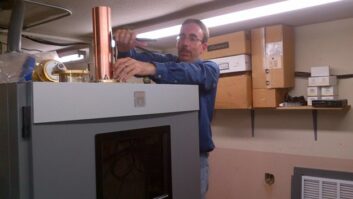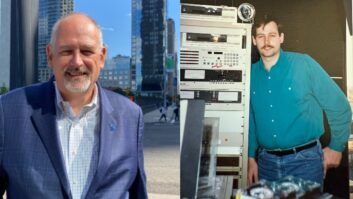
Fig. 1: Two fun signs for the engineer, courtesy of Cracker Barrel. Cracker Barrel is known far and wide to engineers for its great home-style cooking. Their country store always seems to have something of interest, too.
The two signs seen in Fig. 1 should catch the attention of engineers — and other radio staff! The duct tape sign might be appropriate for the engineering shop. I’ll let you decide where to place the other sign.
***
I visited the California Historical Radio Society last month; they hosted the San Francisco SBE Chapter holiday party, coordinated by RF Specialties of California’s Steve Moreen.
In addition to a variety of historical radios and equipment, as shown in Fig. 2, I spotted a Gates Dualux audio console, Fig. 3.


Fig. 2: Going back in time at the California Historical Radio Society’s museum.Fig. 3: The Gates Dualux audio console, circa late 1960s.
I sent a copy of the picture to Radio World contributor Charles “Buc” Fitch, P.E., who wrote that the console brought back a lot of memories. He says that he had this model board in the air studio in El Paso, Texas, in the late ’60s. His CE Mike Gaglio had purchased it at auction from the liquidation of a failed FM station.
The original owner had run it in stereo with left and right channels sent separately to the #1 and #2 outputs (essentially what we would think of as audition and program, respectively). The switching and controlling were laborious and chaotic compared to today’s.
The board was rewired to standard mono and used the right-side faders for air and the left-side faders for audition and off-line recording. For the on-air side, Buc installed one of his proprietary “Fisher Space Expanders,” a modified reverb. Buc added a level/injection set pot on the face of the board, where the output switches were located. Buc adds that these output switches eventually were disconnected, as it was not uncommon for the fast-paced fingers of the top 40 jock to accidentally flip one of the output switches and knock the audio off air!

Fig. 4: When most electronics operated with tubes, a tube checker like this one was commonplace.
Buc also installed a rather bright light on the console face, which illuminated anytime a mic was switched on. The audition side went off to TV master control, the production room across the sound lock, and to the reel-to-reel recorder input. This was a nice feature, it made it easy to record the sign-off news for TV while one was “on air,” as well as to record news for the overnight.
A lot of tubes were used in 1968 in that Dualux, but then again everything was mainly tube. There were some solid-state devices, such as the telco line drivers, the Gates Criterion cart machines, and the low-level sections of the Gates Vanguard transmitter. Exciting times and a changing world. Look how far we’ve come.
And speaking of tubes, while at the CHRS museum, I spotted a real piece of history: the old tube checker shown in Fig. 4. One was located at a local drug store where I grew up, and I remember flipping all those switches as a young lad and not understanding what they did — though I’d find out soon enough.
***
It’s within most engineers’ makeup to be frugal. With that in mind, Bible Broadcasting Network’s staff engineer Steve Tuzeneu sends a tip on a dehydrator that he bought when he worked out west.
It’s manufactured by GAST Manufacturing, a pneumatics company out of Benton Harbor, Mich. Search under products for “model DOA” on http://gastmfg.com. It retails for $1,200 but can be found online for less, Steve writes.
I’ve been suspicious of cheaper dehydrators because many of them contaminate the line they are pressurizing with compressor oil. So what you think is a good idea (buying a cheap dehydrator) ends up costing much more in the long run.
The company specifically says the model DOA provides oil-less operation, which ensures that the discharge air remains free of any lubricant contamination. In addition, it is compact, yet durable and of rugged construction. The company says the DOA is suited for noise-sensitive environments like medical laboratory applications, due to the low noise and vibration operation. Additionally, the unit requires minimal power consumption and can be used as a compressor or vacuum pump for maximum versatility.
Another plus is that the air filter, diaphragm and all valves can be replaced easily, which helps extend the life of the product as well as minimizing down time. Thanks, Steve, for passing on the information.
***

Fig. 5: SBE Chapter 14 Chair Fred Krampits, left, presents a plaque to Buc Fitch.
Courtesy John Ramsey
I’ll close with some words of congratulations. Buc Fitch’s local SBE Chapter 14 recently honored him for years of supporting the chapter as well as many engineers, stations and projects he’s helped over the years. Buc says it was totally unexpected. I’ll add that it was very much deserved, and Radio World Editor in Chief Paul McLane joins me in that sentiment. As many readers too will attest, Buc has always been a great resource and friend to engineers. Congratulations for a job well done, Buc!
Contribute to Workbench. You’ll help your fellow engineers and qualify for SBE recertification credit.
Send Workbench tips to [email protected]. Fax to (603) 472-4944.
Author John Bisset has spent 46 years in the broadcasting industry and is still learning. He handles West Coast sales for the Telos Alliance. He is SBE certified and is a past recipient of the SBE’s Educator of the Year Award.







